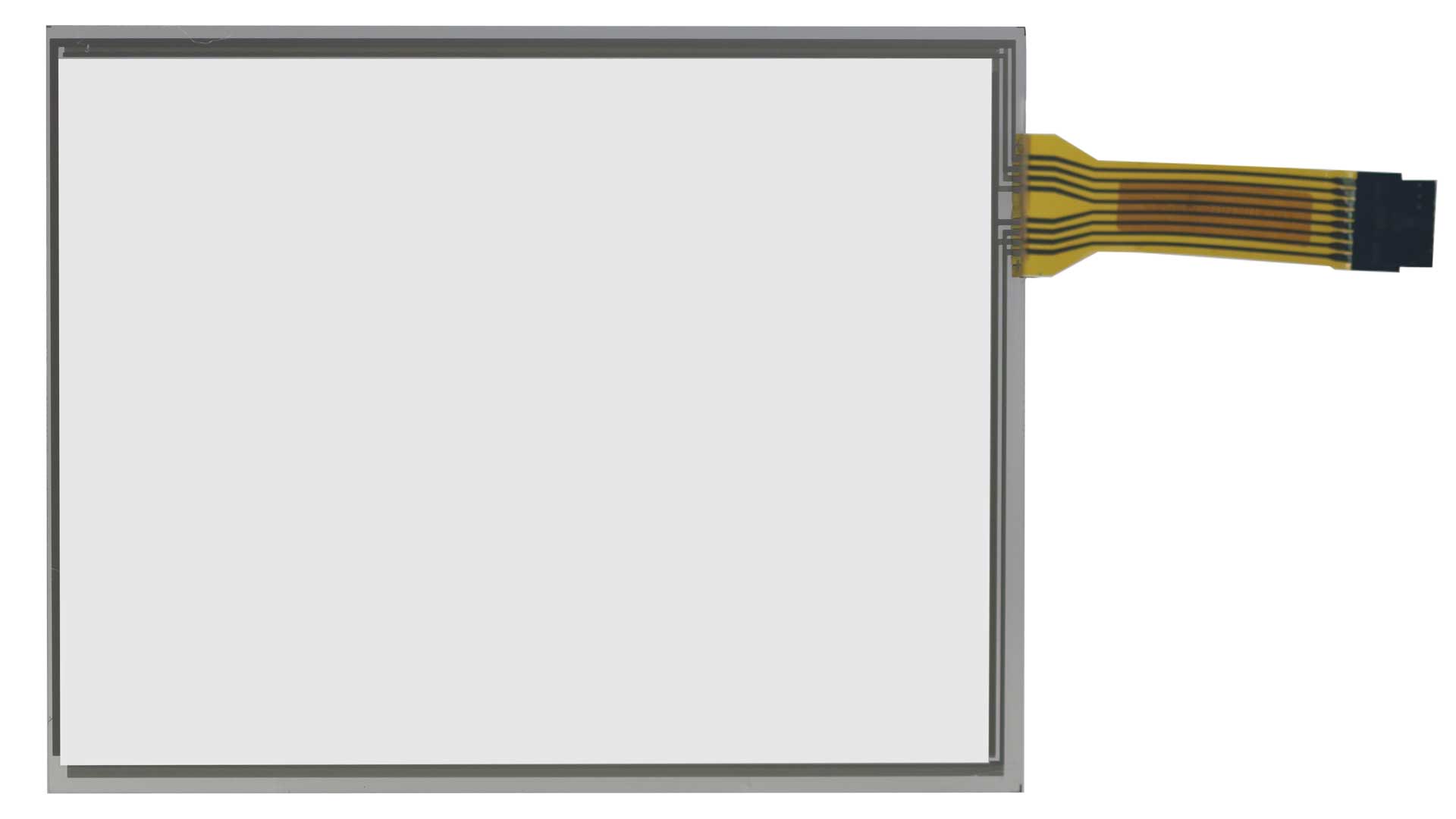What is Analog 8-Wire Resistive Touch Screen?
The Analog 8-wire resistive touch screen is an updated and advanced version of the Analog 4-wire resistive touch screen. Both technologies share a similar structure and sensing method that use two transparent conductive sheets facing each other. One sheet has electrodes on the right and left sides, while the other has electrodes on the top and bottom sides.
Dr Pan: Welcome to DISPLAY Museum. I am Dr Pan, the curator of Museum.
Greg: Hello, Dr Pan. I am Greg. I came here to learn about analog 8-wire resistive touch screen.
Dr Pan: Hello, Greg. Analog 8-wire resistive touch screen is an update of analog 4-wire resistive touch screen. The most vivid feature is 8-wire FPC.
It is going to need two layers to achieve the touch function: Top sheet ITO film and Bottom sheet ITO glass. It is supposed that bottom layer is X electrode and top layer is Y electrode, anode end is 5.0 V and cathode end is 0 V. We presuppose that the voltages are evenly distributed between the Anode end and the Cathode end, but actually, they are not. We add 2 sensors to ITO glass and another 2 to ITO film to adjust the differences of the voltages. It improves the accuracy of the touch.
Greg: Dr Pan, I can barely see any difference between analog 4-wire resistive touch screen and analog 8-wire resistive touch screen, except the latter is more accurate at the touch.
Dr Pan: It is true. It isn’t widely used because it is almost the same as analog 4-wire resistive touch screen. It still can’t solve the short serving time problem. Besides, it is more expensive.
Greg: Thank you, Dr Pan. Now I got it.
Dr Pan: Welcome to contact us if you have any question.


